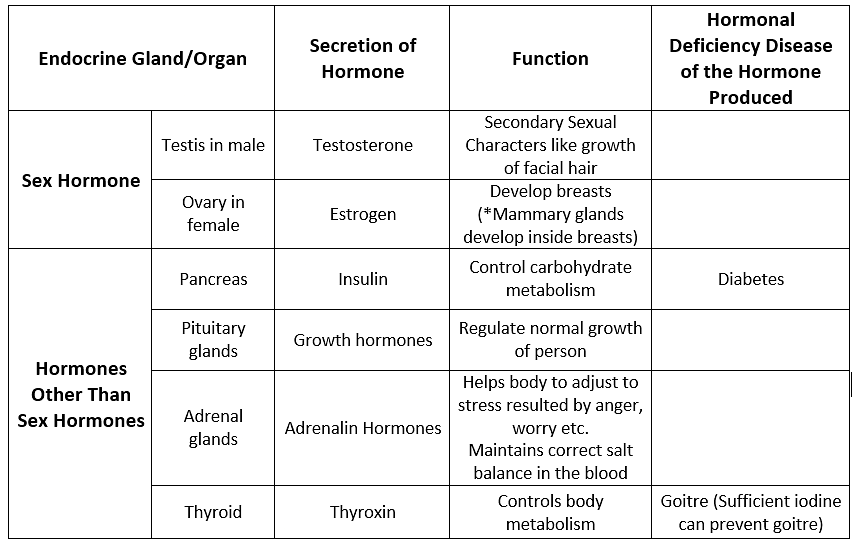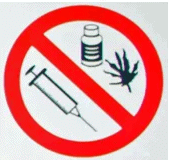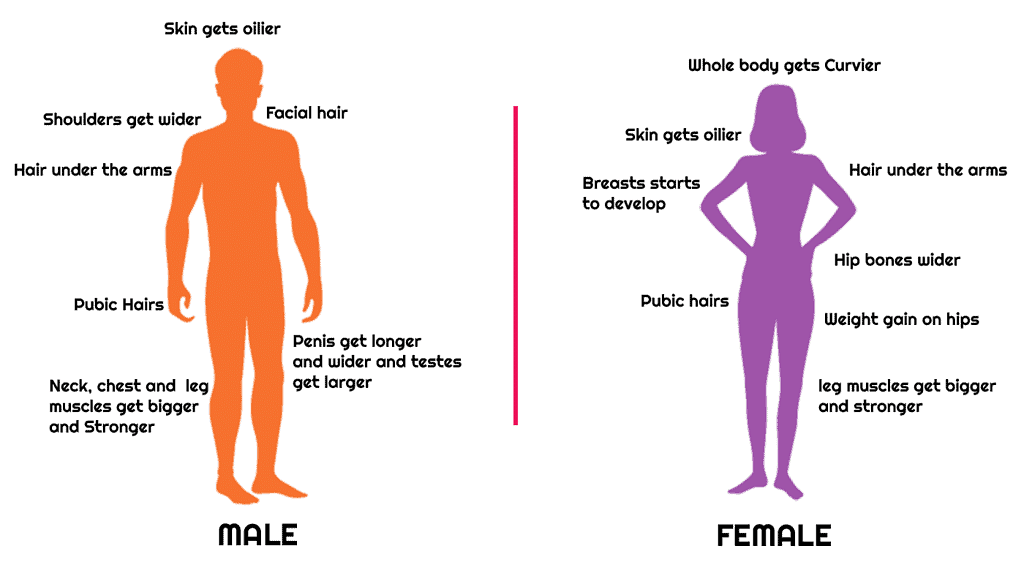Reaching the Age of Adolescence Class 8 Notes Science Chapter 7
Welcome to the exciting world of adolescence! During this time, we experience physical changes, emotional ups and downs, and the thrill of discovering who we are.
As we navigate new friendships and face challenges like peer pressure and self-discovery, understanding this phase helps us embrace our unique experiences and support one another.
Get ready to explore the fascinating journey of adolescence, where every moment is an opportunity to grow!
What is Adolescence?
Adolescence is a developmental phase that marks the transition from childhood to adulthood. It is characterized by physical, psychological, and social changes that prepare individuals for adult roles and responsibilities.
The period of life, when the body changes, leading to reproductive maturity.
- Adolescence begins around 11 and lasts up to 18 or 19 years of age.
- Adolescents are called teenagers as this period covers the teens (13-19 years of age).
- For females, adolescence begins a year or two earlier than boys. The period of adolescence varies from person to person.
 Reaching the Age of Adolescence
Reaching the Age of Adolescence
What is Puberty?
Puberty is the phase of development during which a child's body undergoes various changes to become sexually mature. It marks the beginning of adolescence and is driven by hormonal changes.
 Puberty
Puberty
Changes during Puberty
1. Increase in Height:
- There is a sudden increase in height of a person during puberty due to the elongation of the bones of the arms and legs.
- Even though the height of a person depends on an inherited gene, eating habits, and exercise during adolescence also decide height.
- Initially, girls grow faster than boys.
- Both reach maximum height by the age of about 18 years.

Increase in Height
Note: Formula for calculating full height(cm) = Present height(cm)/ % of full height at this age X 100
2. Changes in Body Shape
- In boys, the shoulders broaden and muscles of the body grow more prominently than in girls.
- For girls, there is a widening of the region below the waist and less growth of muscle.
3. Voice Change
- During puberty, it is noticed that the voice of boys starts cracking and their voice box or larynx starts to grow.
- Adam’s Apple: The increase in the size of the voice box in boys is seen as a prominent protrusion in the neck. This protrusion is called Adam’s apple.
 Adam's Apple
Adam's Apple
4. Increased Activity of Sweat and Sebaceous Glands
- During puberty, there is an increase in the secretion of sweat glands and sebaceous glands (oil glands) which may lead to the appearance of acne and pimples.
5. Development of Sex Organs
- At puberty, male sex organs like the testis and penis develop completely and begin to produce sperm.
- In girls, the ovaries enlarge and start releasing eggs/ova.
6. Reaching Mental, Intellectual, and Emotional Maturity
- Adolescents are more independent and self-conscious than earlier. They tend to think more. Feeling insecure while trying to adjust to the changes in mind and body is prominent.
- During adolescence, a person’s brain has the greatest capacity for learning.
 Changes at Puberty
Changes at Puberty

Difference between Adolescence and Puberty
Secondary Sexual Characters
Characters that develop prominently during adolescence which helps to distinguish between male and female are known as secondary sexual characters.
What are Hormones?
The changes at adolescence are influenced by hormones. The transformations during adolescence are guided by hormones.
- Secretions from endocrine glands are special fluids.
- The male hormone, testosterone, starts being released by the testes during puberty.
- This leads to changes in boys, such as the growth of facial hair.
- When girls reach puberty, their ovaries start making the female hormone, estrogen.
- Estrogen helps in the growth of breasts and the development of milk-secreting glands inside them.
- The production of these hormones is controlled by another hormone from the pituitary gland.
Some of these characters are listed below: Secondary Sexual Characters
Secondary Sexual Characters
Role of Hormones in Initiating Reproductive Function
Endocrine glands release hormones into the bloodstream. The hormones travel to specific body parts known as target sites. Examples include the testes and ovaries, which are ductless glands producing sex hormones for the development of secondary sexual characteristics. The pituitary gland plays a crucial role by releasing hormones that influence the production and regulation of sex hormones, stimulating egg maturation in ovaries and sperm formation in testes.
 The onset of puberty is controlled by hormones
The onset of puberty is controlled by hormones
Reproductive Phase of Life in Humans
Adolescents become capable of reproduction when their testes (in males) and ovaries (in females) start producing gametes. However, In humans, females are born with all their eggs and have a finite number, while males produce sperm continuously throughout their life after puberty.
Female Reproductive Phase
- In females, the reproductive phase begins around puberty (10 to 12 years old) and typically continues until approximately 45 to 50 years of age. During puberty, the ovaries start maturing ova, with one ovum released every 28 to 30 days.
- The uterus lining thickens to support a potential fertilized egg, leading to pregnancy. If fertilization doesn't occur, the released egg and the thickened uterine lining, along with blood vessels, are shed, resulting in menstruation.
- Menstruation happens approximately every 28 to 30 days, with the first menstrual flow at puberty known as menarche.
- Menstruation stops around 45 to 50 years of age, known as menopause.
- The menstrual cycle is governed by hormones and includes various important processes.
- The egg matures and is released.
- The uterine wall thickens.
- If pregnancy doesn't occur, the wall breaks down.
- If the egg is fertilized, it divides and attaches to the uterus for further growth.
 Female Reproductive Phase
Female Reproductive Phase
How is the Sex of the Baby Determined?
What are chromosomes?
Inside a fertilized egg, or zygote, are instructions that determine the baby's sex. These instructions are found in thread-like structures called chromosomes.
The sex of a baby is determined by the combination of sex chromosomes (a type of chromosome involved in sex determination) inherited during conception. In the fertilized egg, instructions for sex are encoded in chromosomes located within the cell nucleus. Humans possess 23 pairs of chromosomes in their cells, including two sex chromosomes named X and Y.
 Sex Determination
Sex Determination
- Females have two X chromosomes (XX), while males have one X and one Y chromosome (XY). Each parent contributes one set of chromosomes through their gametes (egg and sperm).
- An unfertilized egg always carries one X chromosome, and sperm come in two types, one with an X chromosome and the other with a Y chromosome.
- The sex of the unborn baby is determined by which type of sperm fertilizes the egg. If an X-chromosome sperm fertilizes the egg, the baby will be female (XX).
- On the other hand, if a Y chromosome sperm fertilizes the egg, the baby will be male (XY). It's important to note that the sex chromosomes from the father ultimately decide the sex of the baby.
Hormones other than Sex Hormones
- Hormones control the changes during adolescence.
- The pituitary gland (found attached to the brain) secretes hormones which in turn control the production of hormones from other endocrine glands.
- Some endocrine glands, their secretion, and effects are given in the table below:

Role of Hormones in Completing the Life History of Insects and Frogs
- Frogs go through a big change as they grow up, transforming from tadpoles to adult frogs. This transformation is called metamorphosis, and it's similar to how insects change.
- In frogs, a hormone called thyroxine, produced by the thyroid, is in charge of this process.
- To make thyroxine, the tadpoles need iodine, which they get from the water they live in.
- If there isn't enough iodine in the water, the tadpoles won't be able to become adult frogs. So, having the right amount of iodine in their environment is crucial for their development.
 Life Cycle of FrogThe life span of insects can be categorized into four stages:
Life Cycle of FrogThe life span of insects can be categorized into four stages:  Life Cycle of a Housefly
Life Cycle of a Housefly - Metamorphosis: It is the change of an insect from a larva to an adult.
- Hormones in insects control the metamorphosis under the action of the thyroxine hormone produced by the thyroid.
Reproductive Health
The physical and mental well-being of an individual is regarded as healthy. To keep the body healthy, every human being at any age needs to have a balanced diet, observe personal hygiene, and undertake adequate physical exercise.
1. Nutritional Needs of the Adolescents
- Adolescence is a stage of rapid growth and development. So a balanced diet comprising proteins, carbohydrates, fats, minerals, and vitamins in requisite quantity is essential.
- Iron builds blood. Iron-rich food such as leafy vegetables, jaggery, meat, citrus, and Indian gooseberry is good for adolescents.
 Balanced Diet
Balanced Diet
2. Personal Hygiene
Take a bath once a day. It is more necessary for adolescents due to the increased activity of sweat glands which may lead to a smelly body. All parts of the body should be washed and cleaned every day.
3. Physical Exercise
Adolescents should take walks, exercise, and play outdoor games in fresh air to keep them fit and healthy.

4. Say No to Drugs
During teenage, anyone might get affected by the negative energies surrounding him. At such times, falling for drugs can ruin your life.
 No to Drugs
No to Drugs
- If someone suggests that drugs can make you feel better, always say "No" unless prescribed by a doctor.
- Drugs can be addictive, meaning once you try them, you may want to keep using them, which is harmful.
- Using drugs can damage your body and ruin your health and happiness in the long run.
- HIV is the virus causing AIDS, and it is important to emphasize that HIV transmission occurs through specific activities, not all drug use.
- HIV can be transmitted from an infected person to a healthy person by sharing needles used for injecting drugs.
- It can also be passed from an infected mother to her baby through breastfeeding.
- HIV can also be transmitted through sexual contact with an infected person.
- It's important to stay away from drugs to protect yourself from harmful diseases like AIDS and to maintain good health.
Keywords from NCERT
- Adam's Apple: The Adam's apple is a noticeable bump in the throat that is more prominent in boys during puberty. It is the thyroid cartilage of the larynx, which grows larger and more visible as the voice deepens.
- Adolescence: Adolescence is the stage of life between childhood and adulthood. It is a time of significant physical, emotional, and social changes as individuals transition into adulthood.
- Adrenaline: Adrenaline is a hormone released by the adrenal glands in response to stress or excitement. It prepares the body for "fight or flight" responses by increasing heart rate, boosting energy, and improving alertness.
- Balanced Diet: A balanced diet refers to eating a variety of foods that provide all the necessary nutrients in the right proportions. It includes foods from different food groups, such as fruits, vegetables, grains, proteins, and dairy, to ensure proper growth, development, and overall health.
- Endocrine Glands: Endocrine glands are special glands in the body that produce and release hormones directly into the bloodstream. These hormones regulate various bodily functions and maintain balance in the body.
- Estrogen: Estrogen is a hormone found predominantly in females. It plays a crucial role in the development of secondary sexual characteristics, such as breast development and the menstrual cycle.
- Hormones: Hormones are chemical messengers produced by the endocrine glands. They travel through the bloodstream and regulate various body functions, including growth, metabolism, reproduction, and mood.
- Insulin: Insulin is a hormone produced by the pancreas that helps regulate blood sugar levels. It allows cells to take in glucose from the bloodstream and use it for energy.
- Larynx: The larynx, also known as the voice box, is a part of the throat that contains the vocal cords. It is responsible for producing sound and controlling the pitch and volume of our voices.
- Pituitary Gland: The pituitary gland is a small gland located at the base of the brain. It is often referred to as the "master gland" because it releases several hormones that control the functions of other endocrine glands and regulate growth, metabolism, and reproduction.
- Puberty: Puberty is the stage of development when a child's body undergoes physical and hormonal changes to reach sexual maturity. It involves the development of secondary sexual characteristics and the ability to reproduce.
- Reproductive Health: Reproductive health refers to the overall well-being and proper functioning of the reproductive system. It includes the ability to have safe and satisfying sexual relationships, access to healthcare for reproductive concerns, and the freedom to make informed choices about reproduction.
- Secondary Sexual characteristics: Secondary sexual characteristics are physical changes that occur during puberty and distinguish males from females. Examples include breast development and widened hips in females, and deepened voice and facial hair growth in males.
- Sex Chromosome: Sex chromosomes are a pair of chromosomes that determine an individual's biological sex. In humans, females have two X chromosomes (XX), while males have one X and one Y chromosome (XY).
- Target Site: A target site is a specific part of the body that is affected by a particular hormone. Hormones travel through the bloodstream and bind to specific receptors at the target site, triggering specific responses.
- Testosterone: Testosterone is the primary male sex hormone. It plays a crucial role in the development of male reproductive organs, secondary sexual characteristics, and sperm production.
- Thyroxine: Thyroxine is a hormone produced by the thyroid gland. It helps regulate metabolism, growth, and development in the body.
- Voice Box: The voice box, also known as the larynx, is a part of the throat that contains the vocal cords. It is responsible for producing sound and enabling us to speak.
(FAQs) Frequently Asked Questions
Q.1: What is adolescence?
Ans: Adolescence is a phase of development that marks the transition from childhood to adulthood. It is a period of significant physical, emotional, and psychological changes.
Q2: What physical changes occur during adolescence?
Ans: During adolescence, the body undergoes several physical changes, including growth spurts, changes in body shape, and the development of secondary sexual characteristics like facial hair, breast development, and voice changes.
Q3: What are the hormonal changes that occur during puberty?
Ans: The hormonal changes during puberty lead to sexual maturation, such as the release of sex hormones like estrogen and testosterone. These hormones are responsible for the development of secondary sexual characteristics.
Q4: How can one maintain good reproductive health during adolescence?
Ans: Maintaining good reproductive health during adolescence involves practicing safe sex, seeking medical help in case of any issues, and taking care of personal hygiene.
Q5: What are the psychological changes that occur during adolescence?
Ans: Adolescence is a time of significant psychological changes, including mood swings, the development of self-identity, and increased peer pressure.
|
90 videos|273 docs|44 tests
|
FAQs on Reaching the Age of Adolescence Class 8 Notes Science Chapter 7
| 1. What is adolescence and what changes occur during this phase? |  |
| 2. What are secondary sexual characteristics and when do they develop? |  |
| 3. How do hormones initiate reproductive functions in humans? |  |
| 4. How is the sex of the baby determined during conception? |  |
| 5. What is reproductive health and why is it important? |  |

|
Explore Courses for Class 8 exam
|

|























